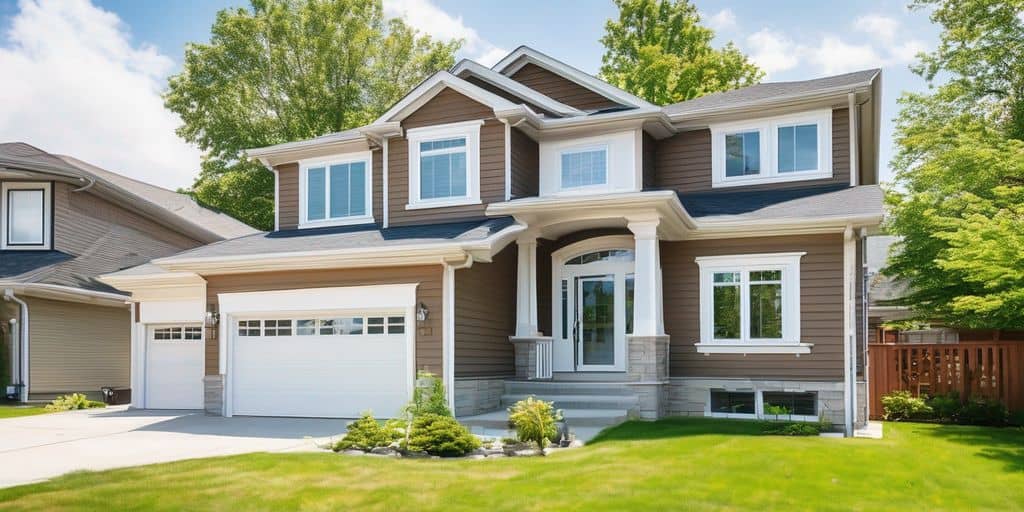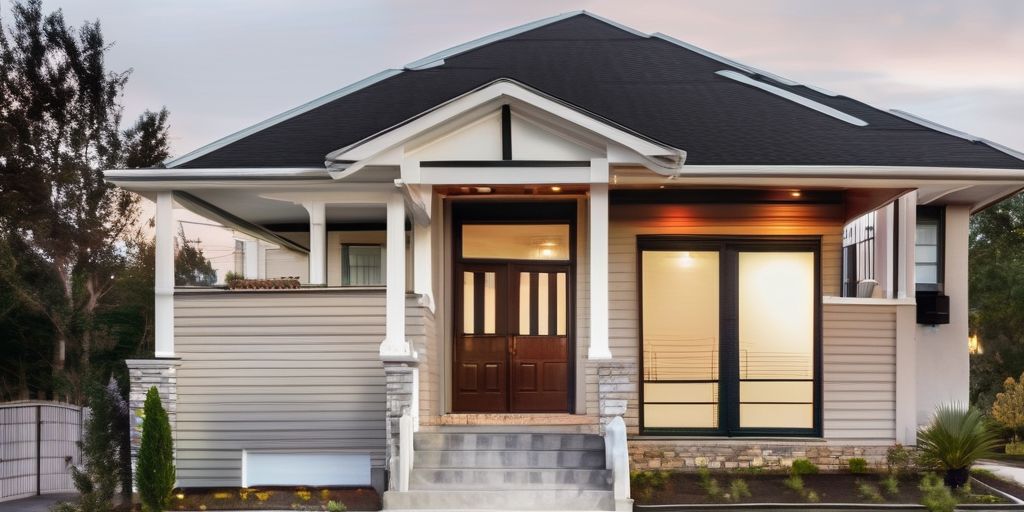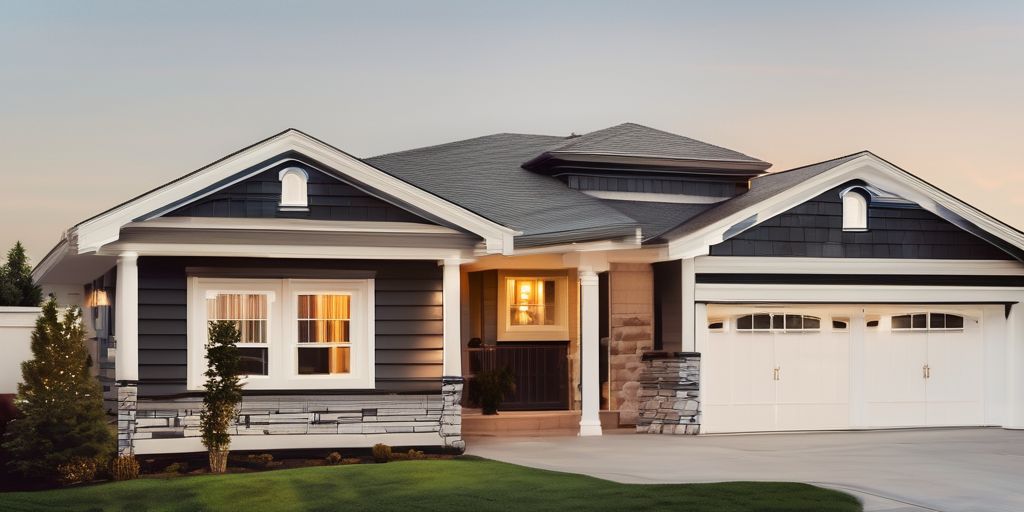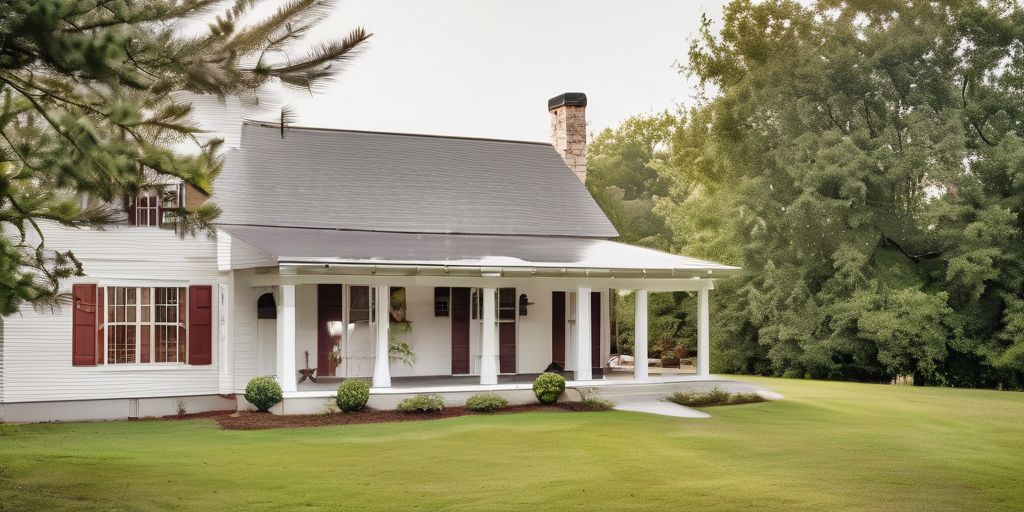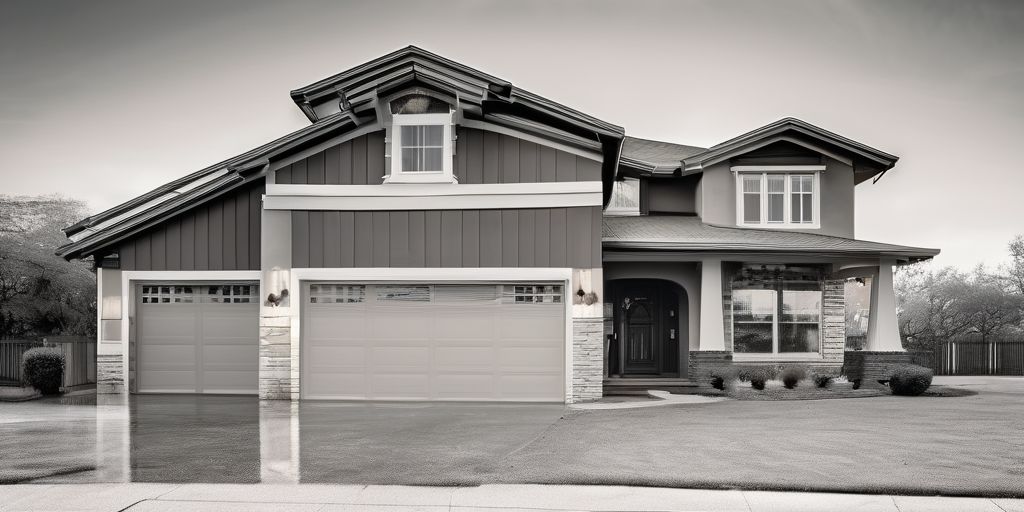When it comes to exterior spray painting in Kitchener-Waterloo, picking the right season is key. Each season has its own set of challenges and benefits that can affect your painting project. This article will guide you through the best times to paint and offer tips for each season to help you get the best results.
Key Takeaways
- Spring and summer are the best seasons for exterior spray painting due to favorable weather conditions.
- Fall can also be a good time for painting, but you’ll need to plan around shorter daylight hours and cooler temperatures.
- Winter painting is possible but requires special precautions and the right type of paint.
- Proper preparation, including surface cleaning and choosing the right materials, is essential for a successful paint job.
- Consulting local experts can provide valuable insights and help you adapt your painting techniques to seasonal changes.
Understanding Kitchener-Waterloo’s Seasonal Climate for Spray Painting
When planning an exterior spray painting project in Kitchener-Waterloo, understanding the local climate is essential. Each season presents unique challenges and opportunities for achieving the best results. Let’s explore how different times of the year can impact your painting plans.
Spring: A Season of Renewal
Spring in Kitchener-Waterloo is a time of fluctuating temperatures and frequent rain. While the weather can be unpredictable, spring offers a chance to refresh your home after winter. Here are some key points to consider:
- Temperatures can vary widely, so it’s important to choose days with stable weather.
- Rain can delay projects, so always check the forecast.
- Lower humidity levels in spring can help paint adhere better.
Summer: The Peak Painting Season
Summer is often considered the best time for exterior spray painting. The warm weather and longer days provide ideal conditions, but there are still some factors to keep in mind:
- High temperatures can cause paint to dry too quickly, leading to cracks.
- Increased humidity can affect paint application and drying times.
- Take advantage of the extended daylight hours to complete projects faster.
Fall: The Sweet Spot for Painting
Fall is a favorite season for many painters in Kitchener-Waterloo. The mild temperatures and lower humidity levels create perfect conditions for a smooth finish. Consider these points:
- Early fall is ideal as temperatures are still warm but not too hot.
- Less rainfall compared to spring makes scheduling easier.
- Preparing your home for winter can add an extra layer of protection.
Winter: Challenges and Considerations
Winter poses significant challenges for exterior spray painting due to the cold weather. However, with the right approach, it can still be done:
- Choose paints specifically formulated for cold weather to ensure proper adhesion.
- Plan your painting days around milder weather to avoid issues with freezing temperatures.
- Special precautions, such as using heaters, may be necessary to maintain optimal conditions.
Remember, the key to a successful exterior painting project is not just skill, but also preparation and adaptability to the local weather conditions.
Benefits of Spring Spray Painting in Kitchener-Waterloo
Optimal Temperatures for Paint Adhesion
Spring in Kitchener-Waterloo offers ideal temperatures for exterior spray painting. The mild weather ensures that the paint adheres well to surfaces, reducing the risk of peeling or cracking. This season provides a balanced climate, avoiding the extreme heat of summer and the cold of winter.
Lower Humidity Levels
During spring, the humidity levels are generally lower compared to summer. This is crucial because high humidity can affect the drying time and finish of the paint. Lower humidity helps in achieving a smooth and even coat, ensuring a professional-looking result.
Refreshing Your Home After Winter
Spring is a time of renewal, making it perfect for refreshing your home’s exterior. After the harsh winter months, your home may need a fresh coat of paint to restore its beauty. This season allows you to address any wear and tear caused by winter weather, giving your home a new lease on life.
Spring is not just about blooming flowers; it’s also the best time to rejuvenate your home’s exterior with a fresh coat of paint.
Consider taking a stroll through Victoria Park to see how the season breathes new life into the surroundings, much like a fresh paint job can do for your home.
Summer Spray Painting Tips for Kitchener-Waterloo Homes
Managing High Temperatures
Summer in Kitchener-Waterloo can get quite hot, which can affect your spray painting project. Here are some tips to manage high temperatures:
- Paint early in the morning or late in the evening when temperatures are cooler.
- Avoid painting in direct sunlight to prevent the paint from drying too quickly.
- Keep your paint in a shaded area to maintain its consistency.
Dealing with Increased Humidity
Humidity can be a challenge during the summer months. High humidity levels can affect paint adhesion and drying times. To deal with increased humidity:
- Check the weather forecast and choose days with lower humidity levels.
- Use dehumidifiers in enclosed areas to control moisture levels.
- Apply thinner coats of paint to allow for better drying.
Maximizing Daylight Hours
One of the advantages of summer is the extended daylight hours. Make the most of this by planning your painting schedule effectively:
- Start your painting project early to take advantage of the long days.
- Plan breaks during the hottest part of the day to avoid heat exhaustion.
- Use the extra daylight to complete detailed work and touch-ups.
Remember, with the right preparation and timing, summer can be an excellent season for spray painting your home in Kitchener-Waterloo. The key is to adapt to the weather conditions and plan your project accordingly.
Fall Spray Painting: Why It’s a Great Choice
Mild Temperatures and Low Humidity
Fall is an excellent time for spray painting because of the mild temperatures and low humidity. These conditions help the paint adhere better and dry evenly. Unlike summer, where high temperatures can cause paint to dry too quickly, fall offers a more controlled environment. This reduces the risk of issues like blistering or peeling.
Less Rainfall and Weather Delays
One of the biggest advantages of fall spray painting is the reduced chance of rain. Less rainfall means fewer weather-related delays, allowing you to complete your project on time. Always check the weather forecast to ensure you pick the best days for painting. This way, you can avoid unexpected interruptions and achieve a smooth, even finish.
Preparing Your Home for Winter
Spray painting in the fall also helps prepare your home for the winter months. A fresh coat of paint acts as a protective barrier against the harsh winter elements. This can help prevent damage to your home’s exterior, saving you time and money in the long run. Using a paint edger saves time and money because it eliminates the need to tape off ceilings and baseboards. This makes the process quicker and more efficient.
Fall is the sweet spot for spray painting, offering the perfect balance of mild temperatures and low humidity. Take advantage of this season to refresh your home’s exterior and prepare it for the winter ahead.
Preparing Your Home for Seasonal Spray Painting
Surface Preparation Tips
Proper surface preparation is crucial for a successful spray painting project. Here are some steps to follow:
- Clean the surface thoroughly to remove dirt, mildew, and loose paint.
- Repair any damaged areas, such as cracks or holes, to ensure a smooth finish.
- Sand the surface to create a good base for the paint to adhere.
- Apply a primer if necessary, especially on bare wood or metal surfaces.
Choosing the Right Paint and Materials
Selecting the appropriate paint and materials can make a significant difference in the longevity and appearance of your paint job. Consider the following:
- Use high-quality, weather-resistant paint suitable for the specific season.
- Choose the right type of paint for your surface, whether it’s wood, metal, or masonry.
- Invest in good-quality brushes, rollers, and spray equipment for a professional finish.
Weather-Related Challenges and Solutions
Each season presents unique challenges for exterior spray painting. Here are some tips to overcome them:
- Spring: Be mindful of unpredictable weather and sudden rain showers. Always check the forecast before starting your project.
- Summer: High temperatures and increased humidity can affect paint drying times. Paint during cooler parts of the day and ensure proper ventilation.
- Fall: Take advantage of mild temperatures and low humidity, but plan for shorter daylight hours.
- Winter: If painting is necessary, use specialized cold-weather paint and plan your painting days carefully to avoid extreme cold.
With the right preparation and materials, you can achieve a beautiful and durable finish, no matter the season.
By following these tips, you can ensure your home is well-prepared for a successful spray painting project, regardless of the time of year.
Professional Tips for Successful Seasonal Spray Painting
Consulting Local Experts
When planning an exterior spray painting project, it’s wise to consult local experts. They understand the unique weather patterns in Kitchener-Waterloo and can provide valuable advice on the best times to paint. Local professionals can also recommend the right type of paint and tools for each season.
Using High-Quality Equipment
Using high-quality equipment is crucial for a successful paint job. Invest in a good paint sprayer, as it ensures even coverage and reduces the risk of paint drips. Additionally, using spray shields or guards can help protect adjacent areas from overspray.
Adapting Techniques to Seasonal Changes
Adapting your painting techniques to the season is essential. For instance, in summer, you might need to manage high temperatures by painting early in the morning or late in the afternoon. In winter, choosing the right paint for cold weather and timing your painting days carefully can make a big difference.
Remember, the key to a successful exterior spray painting project is to adapt your techniques to the season and use the right equipment.
By following these professional tips, you can ensure a smooth and efficient painting process, no matter the season.
Want to make your home look amazing this season? Check out our professional tips for successful spray painting. From prepping surfaces to choosing the right paint, we’ve got you covered. For more detailed advice and to see our stunning before-and-after photos, visit our website today!
Conclusion
In summary, timing your exterior spray painting project in Kitchener-Waterloo is all about understanding the local seasons. Each season offers unique challenges and benefits, from the warm, stable conditions of summer to the cooler, more unpredictable weather of fall and winter. By planning carefully and choosing the right products, you can achieve a beautiful and long-lasting finish. Remember, whether it’s the heat of summer or the chill of winter, with the right preparation and expertise, your painting project can be a success. So, take the time to plan and consult with local professionals to ensure your home looks its best no matter the season.
Frequently Asked Questions
What are the best seasons for exterior spray painting?
The best seasons for exterior spray painting are spring and summer. These seasons offer the best weather conditions for paint to dry and stick well.
Can exterior spray painting be done in the fall and winter?
Yes, you can do exterior spray painting in the fall and winter, but it needs special care due to colder temperatures and possible moisture.
What are the benefits of painting in spring?
Spring has mild temperatures and lower humidity, which are great for paint application and drying. It’s also a good time to update your home’s look after winter.
Are there specific considerations for summer painting?
Yes, summer painting needs attention to high temperatures, direct sunlight, and possible heat waves, which can affect how the paint goes on and dries.
How can I prepare for fall and winter painting?
To prepare for fall and winter painting, clean the surface well, control moisture, and use special cold-weather paint to make sure it sticks and lasts in lower temperatures.
What are the key factors to consider when timing exterior spray painting?
The key factors to consider are temperature, humidity, rain, and the specific needs of the paint you are using.

